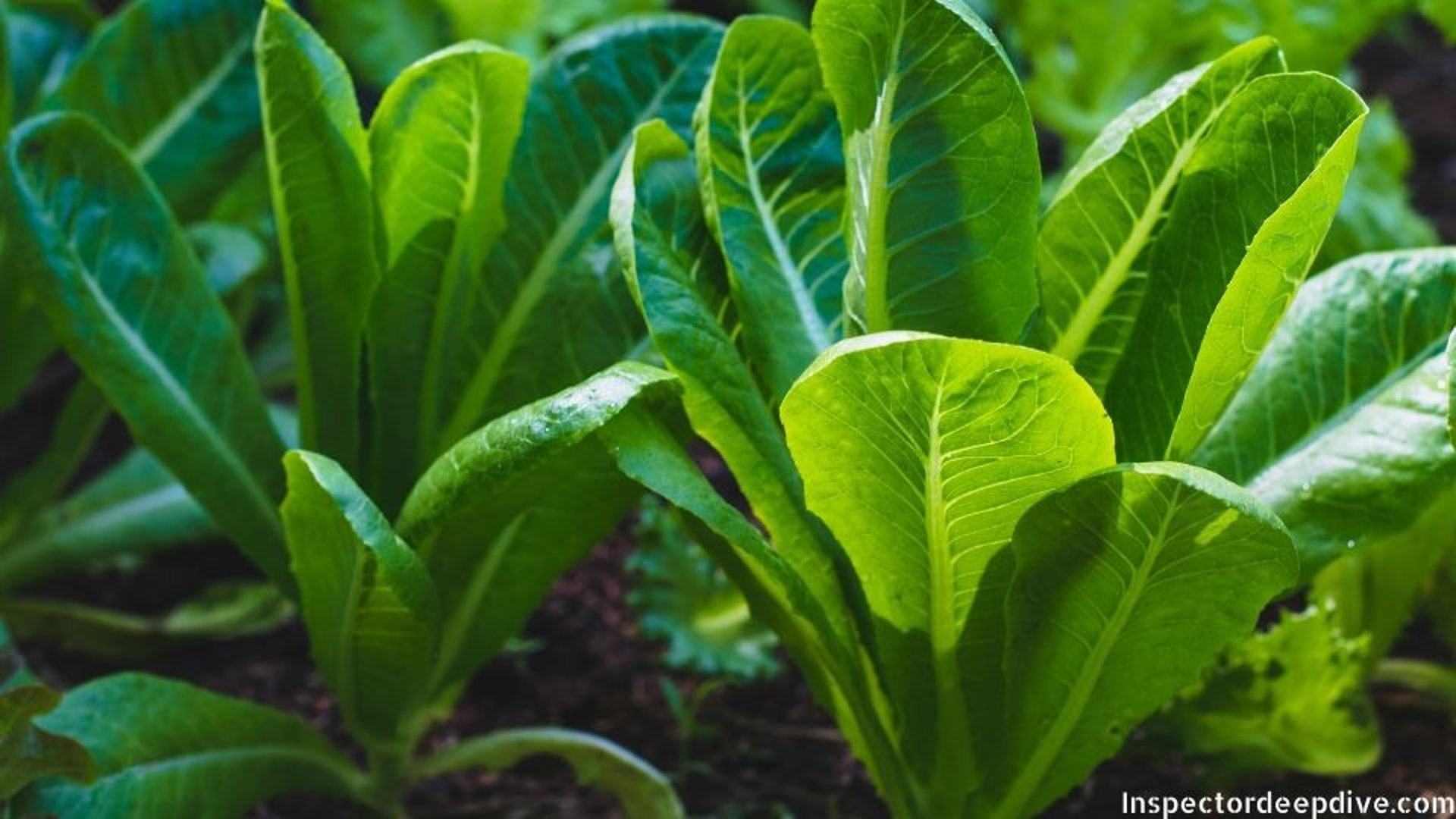
Romaine (Cos) Lettuce: Essential Vitamins, Benefits and Health Facts.

Romaine (Cos) Lettuce: Essential Vitamins, Benefits and Health Facts.
Scientific names: Lactuca sativa var. longifolia
Family: Asteraceae
What is Romaine (Cos) Lettuce?
Romaine lettuce, also known as Cos lettuce, is a variety of lettuce characterized by its long, sturdy leaves, crisp texture, and a slightly bitter taste. It is a popular choice for salads, sandwiches, and as a garnish.
Origin and availability
Romaine lettuce originated in the Mediterranean region and has been cultivated for thousands of years. It was a staple in ancient Egyptian and Roman diets and remains popular worldwide today. It is available year-round, but its peak season is during cooler months, particularly spring and fall, when it grows best.
How many varieties?
There are several varieties of romaine lettuce, including Paris White, Parris Island Green, and Little Gem, each with slight differences in size, color, and flavor.
Benefits
Romaine lettuce is hydrating and packed with nutrients. Key benefits include:
Rich in vitamins A, K, and C, which support vision, immune function, and skin health.
High in antioxidants that protect cells from oxidative stress.
Supports hydration due to its high water content.
May aid in digestion due to its fiber content.
Nutritional breakdown (per 100 g raw, approx).
Vitamins
Vitamin A: 4493 IU supports vision, cell health, and immune function.
Vitamin C: 24 mg aids immune function and collagen production; acts as an antioxidant.
Vitamin K: 48 µg essential for blood clotting and bone metabolism.
Folate: 73 µg important for cell division and critical during pregnancy.
Minerals
Potassium: 247 mg helps regulate fluid balance and supports heart and muscle function.
Calcium: 35 mg contributes to bone and teeth strength.
Iron: 1.2 mg needed for oxygen transport in the blood.
Magnesium: 13 mg involved in energy production and muscle and nerve function.
Macronutrients
Water: 94 g high water content supports hydration and adds low-calorie volume to meals.
Energy: 17 kcal very low in calories, useful for calorie-conscious eating.
Protein: 1.2 g provides small amounts of amino acids for cell maintenance and repair.
Total fat: 0.3 g minimal fat, mostly unsaturated.
Carbohydrates: 3.3 g includes natural sugars and fiber for gentle energy.
Dietary fiber: 2 g supports digestion and helps you feel full.
Sugars: 1.2 g naturally occurring simple sugars.
The “anti” factors
Anti-inflammatory: contains antioxidants and vitamin K that help reduce inflammation.
Antioxidant: neutralizes free radicals and protects cells from oxidative damage.
Anti-cancer (potential): antioxidants in romaine lettuce may help prevent certain cancers by combating oxidative stress.
Risks and medication interactions
Pesticide Residue: conventionally grown romaine lettuce can contain pesticide residues; organic options are recommended for those concerned.
Medication interaction: the high vitamin K content can affect blood-thinning medications (e.g., warfarin). If you take anticoagulants, consult your clinician about consistent vitamin K intake and monitoring.
How it affects your body
Romaine lettuce supports hydration due to its high water content and provides essential vitamins and minerals that promote overall wellness. Its fiber content aids digestion and gut health.
Who should be cautious?
Individuals on blood thinners should monitor their intake due to the high vitamin K content.
Those sensitive to pesticide residues may prefer organic romaine lettuce.
Surprising truths
Romaine lettuce is more nutrient-dense than iceberg lettuce, making it a healthier choice for salads and meals. It has been consumed since ancient times and was considered a symbol of health and vitality.
Environmental impact
Romaine lettuce requires less water to grow compared to some other crops, but transportation and packaging can increase its carbon footprint. Choosing locally grown options can help reduce environmental impact.
Best ways to use it
Romaine lettuce can be used in salads, sandwiches, wraps, and as a garnish. Its sturdy leaves make it ideal for grilling or using as a low-carb wrap alternative.
Best time to eat
Romaine lettuce is best enjoyed fresh during its peak season in spring and fall when it is crisp and flavorful.
Storage & shelf life
Store romaine lettuce in the refrigerator, preferably in a plastic bag or container, to maintain freshness. It can last up to one week but should be consumed promptly to avoid wilting.
Label-reading tips
Look for crisp, vibrant heads of romaine lettuce without browning or wilting. Organic labels indicate reduced pesticide use, which is beneficial for sensitive individuals.
Chef or culinary tips
Wash and dry romaine lettuce thoroughly before use to remove dirt and excess moisture. Pair with bold dressings or grilled proteins to enhance its mild flavor.
Recipes or meal ideas
Classic Caesar Salad with Grilled Chicken and Parmesan
Grilled Romaine Wedges with Lemon and Herbs
Romaine Lettuce Wraps with Turkey and Avocado
Taco Salad with Romaine Lettuce, Beans, and Salsa
Romaine Lettuce Smoothie with Apple and Ginger
2025 latest scientific information on romaine
Romaine lettuce's high water content and nutrient density play key roles in hydration and overall health. Research highlights its role in supporting a balanced diet and reducing the risk of chronic diseases. It is a good source of vitamin A, which supports eye health and immune function, and contains dietary fiber, which aids digestion and supports heart health.
Frequently asked questions
Is romaine lettuce healthy?
Yes, romaine lettuce is hydrating, nutrient-dense, and provides essential vitamins and minerals.
Can you eat romaine lettuce raw?
Yes, romaine lettuce is safe and commonly eaten raw in salads, sandwiches, and wraps.
How do you store romaine lettuce to keep it fresh?
Store romaine lettuce in the refrigerator in a plastic bag or container to maintain its crispness.
info@inspectordeepdive.com
© 2025 food.InspectorDeepDive.com. All rights reserved. Content may not be copied or republished without permission.
This article is for informational purposes only. InspectorDeepDive.com does not provide medical advice. Always consult a licensed healthcare provider before making dietary or health decisions.
